Endive is a green leafy green vegetable with canoe-shaped leaves. Native to Indonesia and Egypt and a member of the Asteraceae (daisy) family of plants, it’s a close cousin to chicory, radicchio and Belgian endive (witloof).
Endive is a cool weather crop like lettuce, and actually grows the same way. The leaves are bitter, but get sweeter when cooked. You’ll often find it in fancy mixes of lettuce greens because of its attractive, frilly leaves.
It turns out that endive is nutritious as well. In juicing, it’s best to blend endive with other veggies for a sweeter – or at least more neutral – taste. Other creative uses for this vegetable include wraps, as the shape of the leaves is optimal for holding ingredients together.
While most Americans pronounce the word as “ehn-dive,” the correct pronunciation (with a French twist) is “on-deeve.” Despite this, it’s still the same tasty salad green – albeit rather pale and exotic-looking – that can add nutritious panache to nearly any meal.
Health Benefits of Endive
A half-cup serving (0.25 grams) of chopped endive is a sensible size; maybe two cups, which weighs just 50 grams, may be more realistic. But a single-cup serving already provides 542 IUs of vitamin A, as well as 36 micrograms of folate and 13 milligrams of calcium.
Vitamin A, along with ß-carotenes, which convert to vitamin A in the body, team up for a double dose of benefits for the eyes. Vitamin A is required to maintain healthy mucus membranes and skin, and protect against lung and mouth cancers (when combined with vitamin E).
Endive also provides 57.8 micrograms of vitamin K in a single-cup serving, which is important for balanced blood coagulation.
Other B vitamins in endive include folate (the natural form of this vitamin – not the synthetic form called folic acid), thiamin (vitamin B1), niacin (vitamin B3) and riboflavin. These all work together to ensure healthy brain function and metabolism of fats, but it’s important to note that these vitamins and the functions they provide can only come from your diet. So when you hear how important it is to eat your greens, this is just one reason why.
The manganese content in endive maintains an amazing number of vital processes within the body. It assists the body in blood clotting by regulating blood sugar and metabolizing carbohydrates, and helps form bones and pubertal development. It’s also important for the optimal function of the nerves and brain, and is one of the players in the fight against free radicals as a component of the antioxidant enzyme superoxide dismutase.
The high fiber content in endive helps keep the digestive system running smoothly. Research shows that this essential nutrient found in fruits and vegetables may help lower the risk of coronary heart disease, cancer of the large intestine, diabetes, diverticulosis, hypertension and gallstones.
The kaempferol in endive (also found in other crucifers) has been found to naturally inhibit ovarian cancer cells. In fact, when these cells are exposed to it, they die. But kaempferol also has the ability to stop cancer from growing blood vessels that feed them – starving them, in essence – a process called angiogenesis. For more information on the nutritional content of endive, refer to the table below.
| Endive Nutrition Facts
Serving Size: 3.5 ounces (100 grams), raw |
||
| Amt. Per Serving |
% Daily Value* |
|
| Calories | 17 | |
| Calories from Fat | 0 | |
| Total Fat | 0.20 g | |
| Saturated Fat | 0.048 g | |
| Trans Fat | ||
| Cholesterol | 0 mg | |
| Sodium | 22 mg | |
| Total Carbohydrates | 3.35 g | |
| Dietary Fiber | 3.1 g | |
| Sugar | 0.25 g | |
| Protein | 1.25 g | |
| Vitamin A108 µg | Vitamin C | 6.5 mg |
| Calcium52 mg | Iron | 0.83 mg |
Studies on Endive
Kaempferol is a flavonoid found in many edible plants, including endive. Epidemiological studies have found links between cancer and cardiovascular disease risks and the consumption of kaempferol-rich foods like endive. And numerous preclinical studies indicate that kaempferol confers “antioxidant, anti-inflammatory, antimicrobial, anticancer, cardioprotective, neuroprotective, antidiabetic, anti-osteoporotic, estrogenic/antiestrogenic, anxiolytic, analgesic and antiallergic benefits.”
Although the study was undertaken to explore the value of developing kaempferol-based drug therapies, it’s clear that this phytochemical contains powerful cancer-fighting compounds.
Endive Fun Facts
The nomenclature for endive can be confusing for most people. The vegetable is often interchanged with Belgian endive. There are two varieties of “real” endive: frisée (curly endive) and escarole.
Belgian endive is actually a member of the chicory family. It was “discovered” in 1830 by Jan Lammers of Belgium, who forgot that he’d stored chicory roots in his dark, warm cellar. He later found that the roots had sprouted, producing a “new” type of green with wide, pale, flavorful leaves.
Summary
A relative of chicory, endive is from the daisy family and native to Indonesia. It has distinctive, curly green leaves and a bitter flavor, which is why it’s often combined with other greens in salads. It’s also cooked and has found itself in soups, stir fries and curry dishes.
Pronounced “on-deeve,” this veggie is loaded with a long list of nutrients, from vitamin A to B-carotenes, superoxide dismutase, manganese, copper and folate.
For a delectable salad, try a combination of endive with honey, balsamic or raspberry vinaigrette, sliced Granny Smith apples, walnuts and blue cheese.

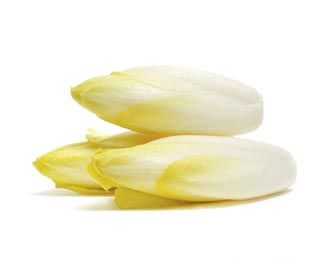

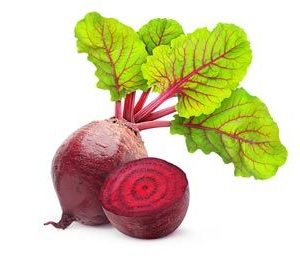
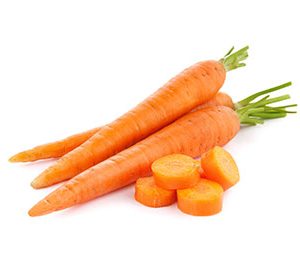
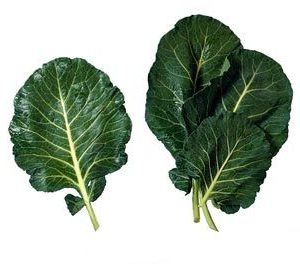
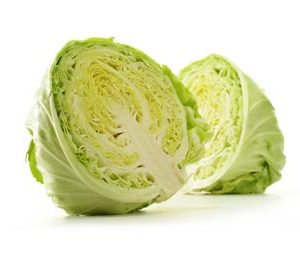
Reviews
There are no reviews yet.